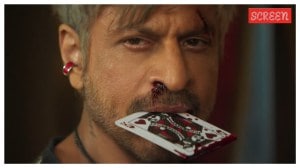‘Denotes lack of trust’: Secretly recorded phone call by spouse can be used as evidence in divorce cases, says SC
The Punjab and Haryana High Court held that recording the wife's telephonic conversation without her knowledge amounts to a “clear breach of the fundamental right of the petitioner-wife, ie, her right to privacy”.
 The Bathinda Family Court had allowed the husband to place reliance on recorded telephone calls with his wife to prove allegations of cruelty. (File)
The Bathinda Family Court had allowed the husband to place reliance on recorded telephone calls with his wife to prove allegations of cruelty. (File)Spouses snooping on each other “is in itself a symptom of a broken relationship and denotes a lack of trust between them”, the Supreme Court said Monday as it set aside a Punjab and Haryana High Court order held that secretly recorded telephonic conversations of parties in a marriage cannot be admitted as evidence in divorce proceedings.
A bench of Justices B V Nagarathna and S C Sharma rejected the argument by amicus curiae Advocate Vrinda Grover “that permitting such an evidence would jeopardise domestic harmony and matrimonial relationship inasmuch as it would encourage snooping on the spouse, thereby fracturing the very objective of Section 122 of the Evidence Act”.
Writing for the bench, Justice Nagarathna said, “We do not think such an argument is tenable. If the marriage has reached a stage where spouses are actively snooping on each other, that is in itself a symptom of a broken relationship and denotes a lack of trust between them. The said snooping cannot be said to be a consequence of the Court admitting the evidence obtained by snooping. In fact, snooping between partners is an effect and not a cause of marital disharmony.”
Section 122 bars disclosure of marital communications without consent, except in legal proceedings between the spouses or where one is prosecuted for a crime against the other.
The judgment said that while the “privacy of communication exists between spouses, as has been recognised by Section 122, but the said right of privacy cannot be absolute and has to be read also in light of the exception provided…”
Discussing the admissibility of electronic evidence vis-a-vis right to privacy, the court also touched on the keep up with the advancements in technology and said “now, in today’s day and age, when the technological advancement has made it easier to record and recreate moments of past and present for reference in future, then to say that such better forms of evidence and material would not be admissible on the ground of they being in violation of the right to privacy would amount to defeating the very object of the Evidence Act.”
It said that “before a Court of law, a relevant piece of conversation available on an electronic device should not be allowed to be shut out when it is the best evidence available for deciding the dispute. The erstwhile Evidence Act is a legislation that was more than a century old and therefore obviously could not encapsulate all the technologically varied challenges which the modern technology poses before us. Yet, what the said legislation remarkably conveys is that the purpose of the law of evidence is not to create barriers but to break them to ensure that a clearer picture is created in the mind of the judge so as to decide a dispute before it. This is why when the evidence is not direct, the legislation allows a judge to rely on circumstantial evidence; it allows presumptions of fact and law and adverse inferences to be drawn from the conduct of parties and witnesses so that a fair and reasonable conclusion can be reached from the material on record.”
The ruling said, “that was the reason for the Parliament to amend the Evidence Act by incorporating Section 65B which specifically deals with electronic evidence.”
The Bathinda Family Court allowed the husband to place reliance on recorded telephone calls with his wife to prove allegations of cruelty. The wife challenged this before the high court, arguing that their conversations were recorded without her consent, and allowing it to be used as evidence would breach her fundamental right to privacy.







